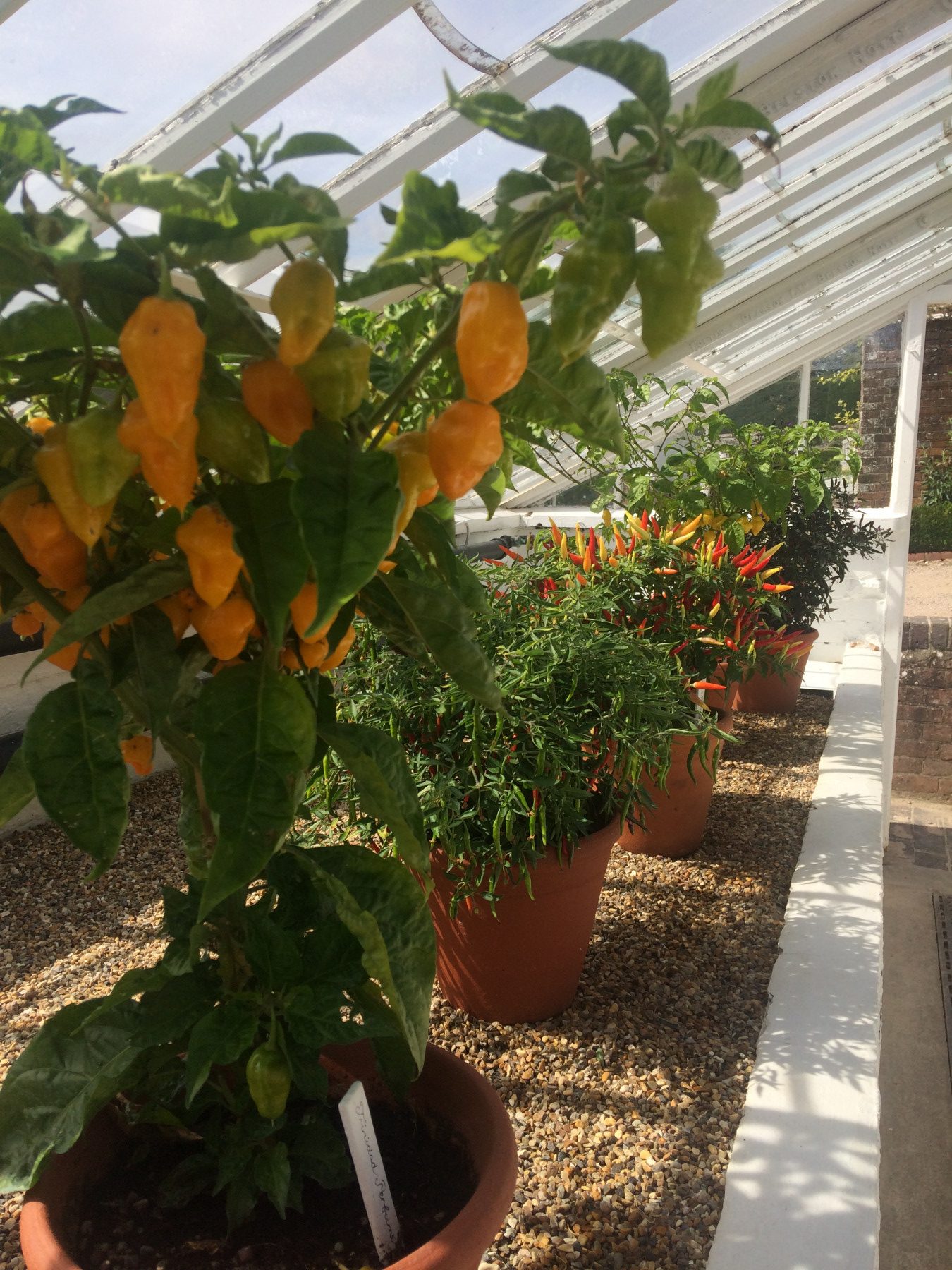
I was lucky enough to spend a few glorious days in the greenhouses at West Dean at the height of chilli season last year. I was attending the annual West Dean Chilli Fiesta, which was started up to celebrate this moment in the year when their greenhouses are full of fiery colours and even more fiery tastes. The majority of the Fiesta takes place in the wider grounds – specialist nurseries, talks, cookery demonstrations, music, and enough hot sauce to fill a small lake. But when all the fun of the fair gets a little too much attendees can also sneak off to the beautiful glasshouses. These are kept in a manner reminiscent of walled gardens of old, that is: pristine. The horticultural standards at West Dean have to be seen to be believed. Everything is perfect. There is not a weed in sight and everything that should be clipped, pruned or tied up is clipped, pruned and tied up. Tomatoes are treated like precious vines, and have a whole house of their own where they are strapped to the ceiling, their ripening fruits hanging down. There is a glasshouse for everything: one full of begonias and tropical plants, one for vines and one for peaches, a cold frame for salads and – of course – a whole house dedicated to chillies.
I mention this at this moment in time because this is the month to start sowing your chillies. Those at West Dean will be well underway already, although sadly no longer under the eye of amazing head gardeners Sarah Wain and Jim Buckland, who took their well-earned retirement at the end of last year. It is time to scrub up our pots, fire up our heated propagators, and start off our own. West Dean grows a great number of different varieties, and although you may think ‘well they would they have a chilli house…’ in fact it is not so hard to emulate this at home to a lesser extent. Chillies are not large plants but you can get a good and sometimes almost overwhelming crop from just one plant, so there is really little point in growing lots of the same variety and every excuse to try a few different types out. Sea Spring Seeds are one of the best chilli seed nurseries, and have a wonderful and carefully curated range. Have a look at their website www.seaspringseeds.co.uk/ and take your pick.
The heated propagator is a great time saver, and if you don’t have one they are very cheap, many of them will fit onto a windowsill, and they use hardly any electricity, so really consider investing. They get chilli seeds started into growth in a fraction of the time. That gentle but dependable heat is irresistible, and very far from the plunge from heat to cold afforded by the average radiator-warmed windowsill. Once they have started into growth they can come out of the propagator, and you should keep an eye on them for growth. Many vegetables will almost throw themselves out of their pots to let you know that they need to be potted on: they just keep on growing until they topple over. But when chillies grow as much as they can in one pot they just stop growing, and so you do need to keep on potting them on before they really look like they need it. Finally one of the tips I picked up at West Dean is not to feed once a week but to create a very watered down feed and to use that every day. The plant gets better use from a constant drip of nutrients than it does from a burst every now and then.


